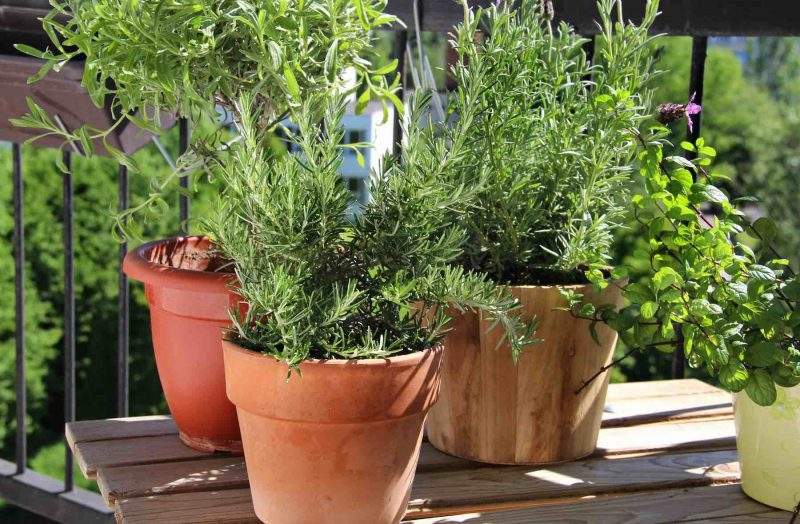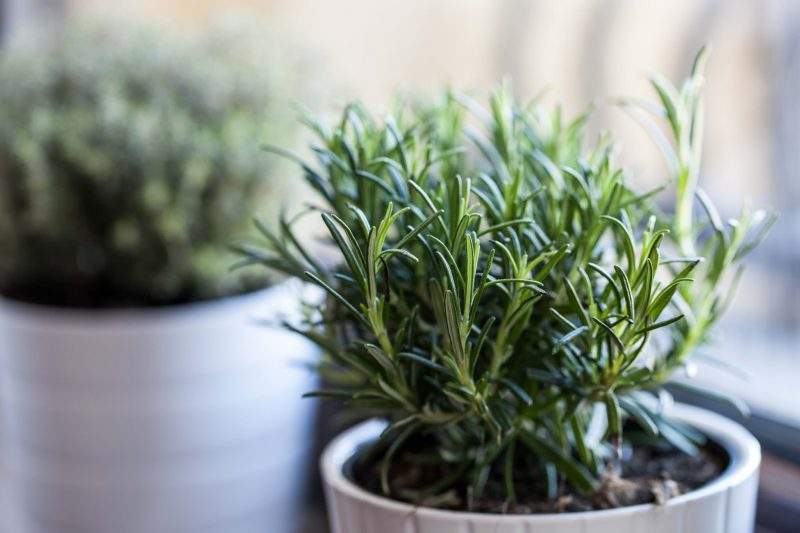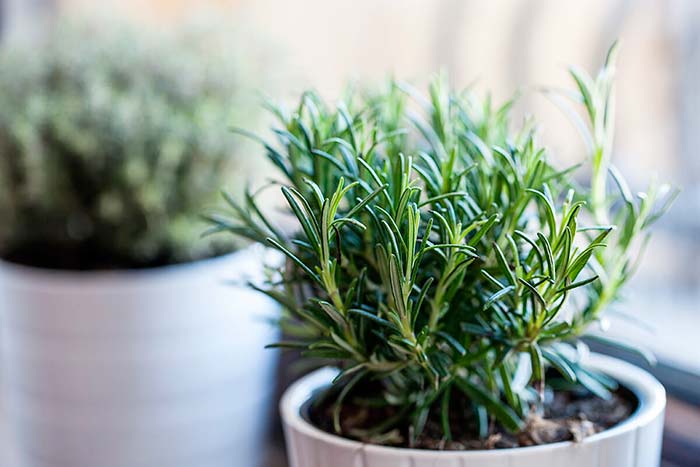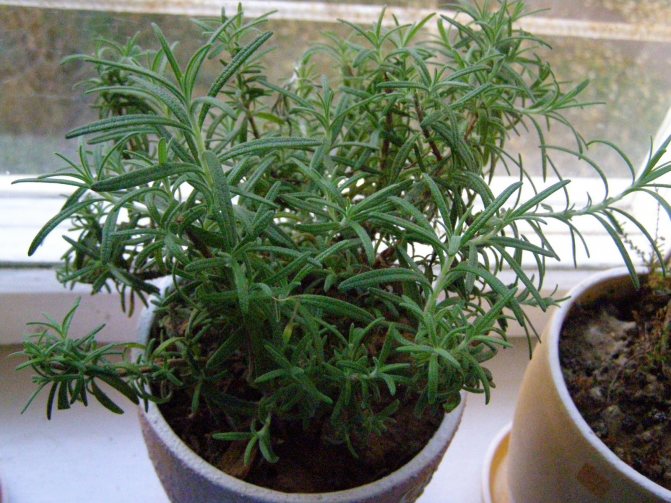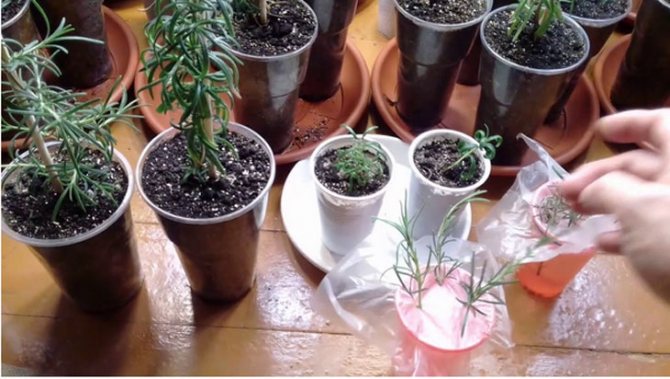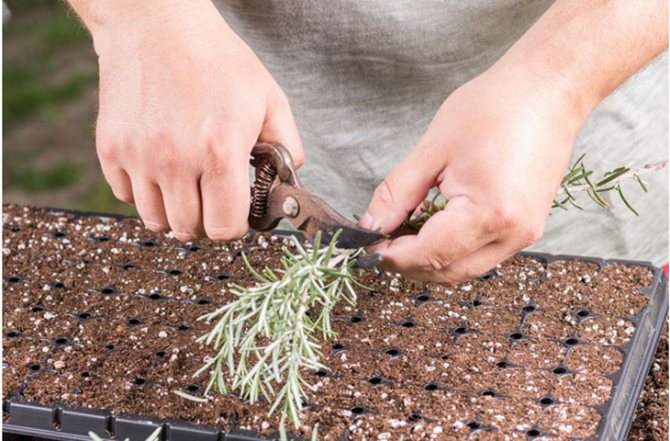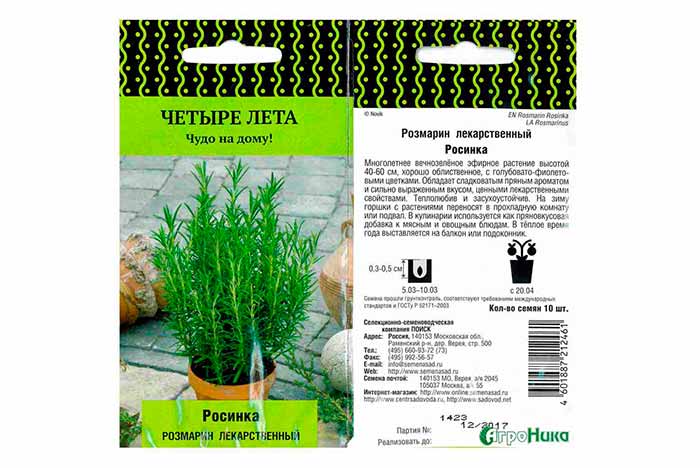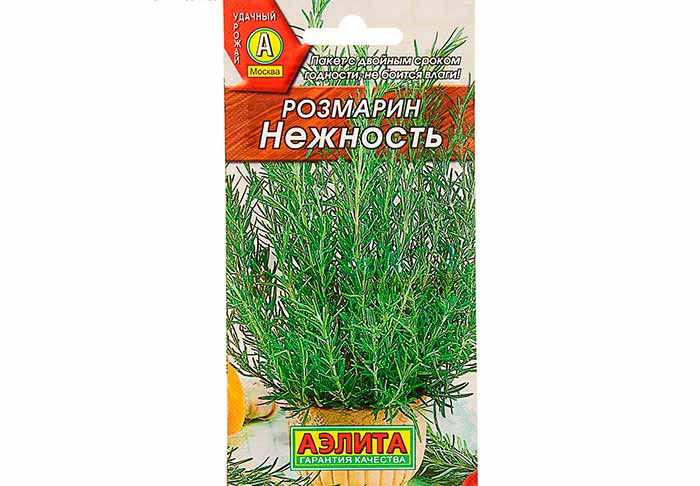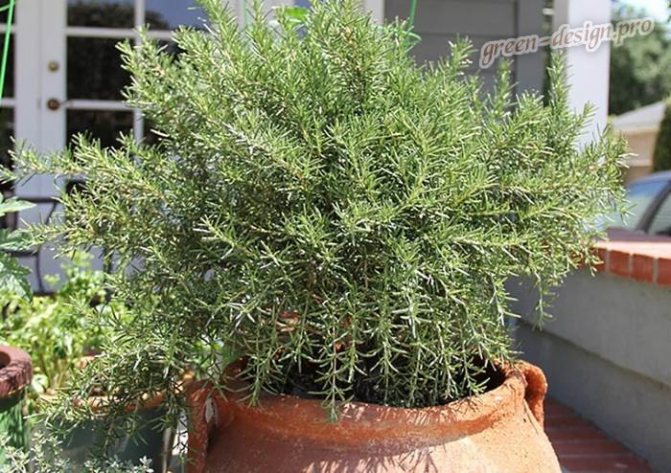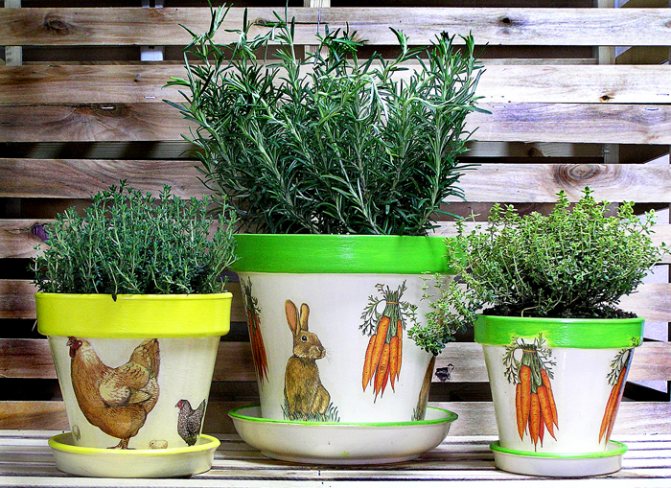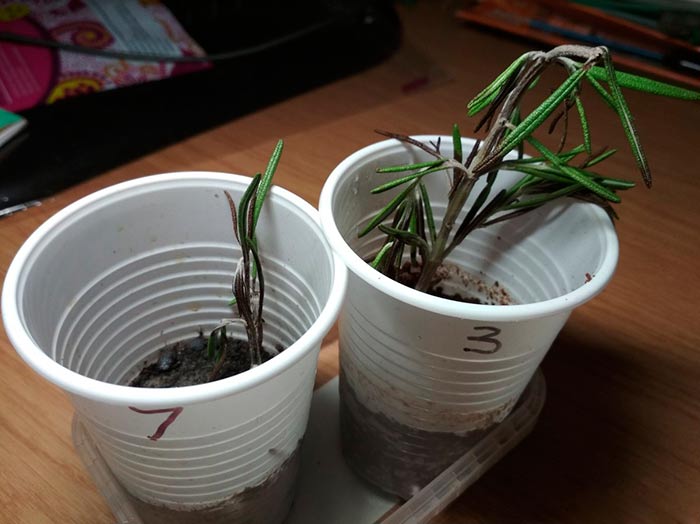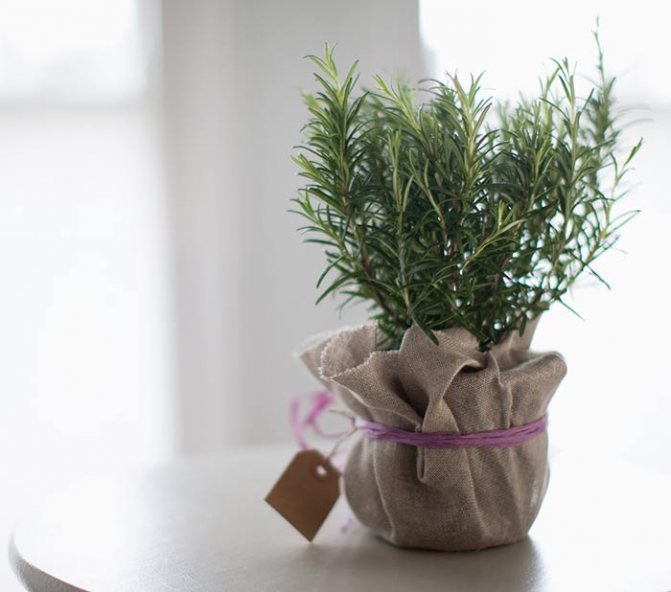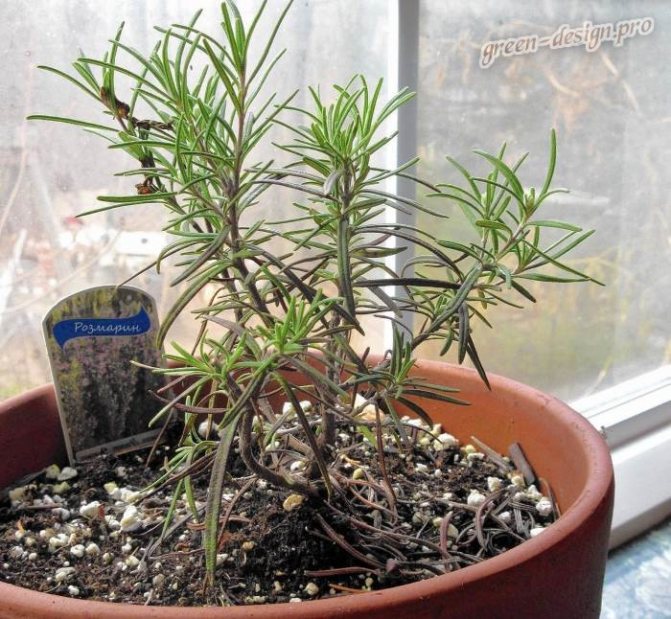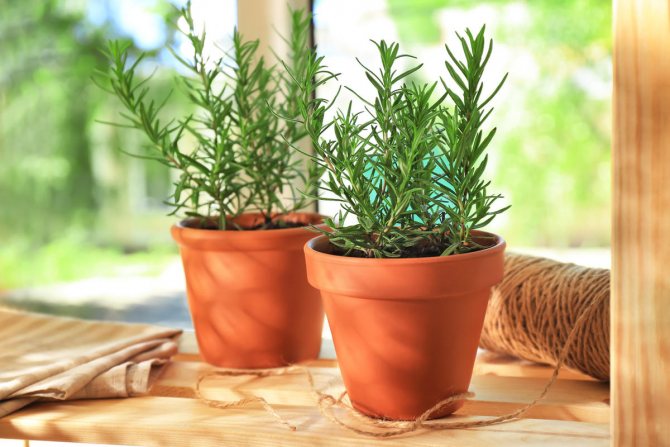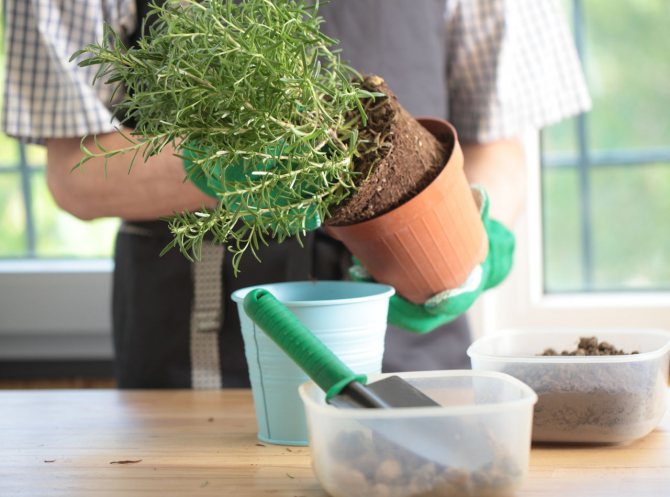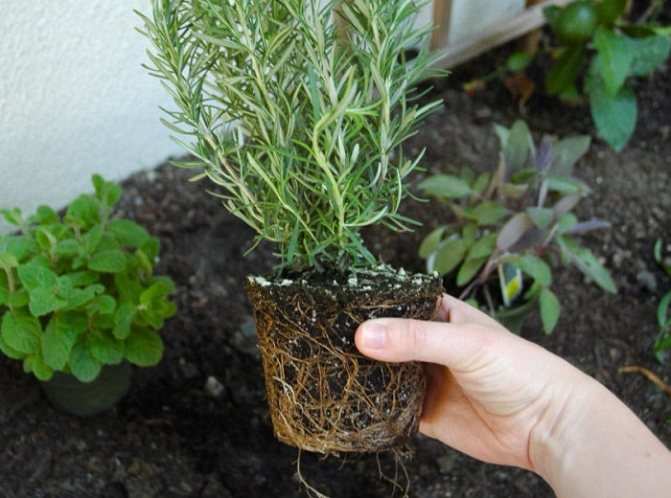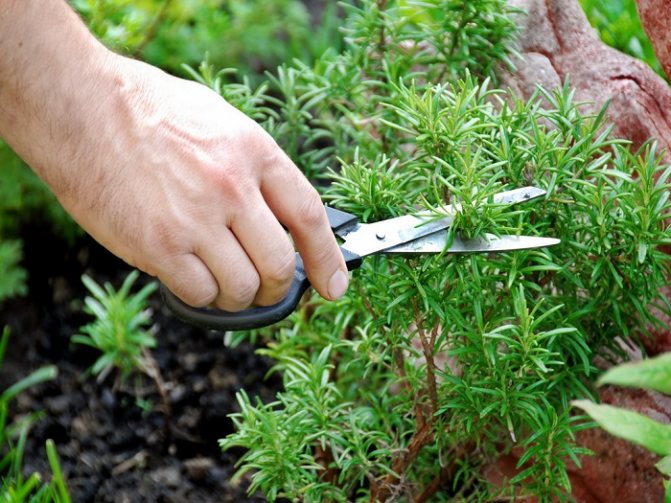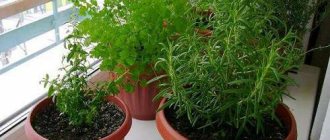Due to their wonderful aroma, rosemary sprigs have been used in cooking for several centuries for the preparation of many dishes. The substances contained in the spice plant improve mood and relieve stress. In addition, rosemary releases essential oils that kill disease-causing bacteria.
So why not have such useful and beautiful greenery in your apartment on the windowsill?
Unfortunately, this wonderful spicy heat-loving plant cannot withstand frosty winters. To preserve rosemary until spring, gardeners have to move it to an apartment and continue growing it indoors, and many end up leaving it at home on the windowsill.
Characteristics of rosemary and what it looks like
Rosemary is a genus of perennial plants from the Lamiaceae family. In its natural habitat, it can grow in the form of a shrub or semi-shrub, due to which it is quite often grown as a hedge. The Mediterranean wild plant can be found in the dry sloping mountains of Africa, Turkey, Cyprus, Greece, Israel, Italy, Portugal and Spain.
The shrub has a highly developed root system, which is capable of penetrating 4 m into the depth of the soil, due to which it can grow even in arid areas. Thanks to its beautiful and flexible bark, the plant can be grown in the bonsai style. The height of the bush can reach 1.5-2 m in its natural habitat and up to 1 m indoors.
Sessile leaves in a linear shape are attached to the gray pubescent shoots of rosemary with the help of short petioles. Leathery glossy leaves with curved edges have a two-tone color. Above they are deep green, and below they are gray-green or almost white.
Blue-violet rosemary flowers are collected in dense inflorescences of small size. Flowering under favorable conditions can last about 25 days. The shrub exudes a pleasant refreshing aroma, reminiscent of a mixture of pine needles, eucalyptus and lemon.
Harvesting
I have a rosemary bush for 7 years. Sometimes I pick off green needles to add to seasoning or tea. During flowering, I carefully cut off the young tops of the shoots with garden scissors, they are softer and more fragrant. Then I rinse, lay out on a paper towel to dry out.
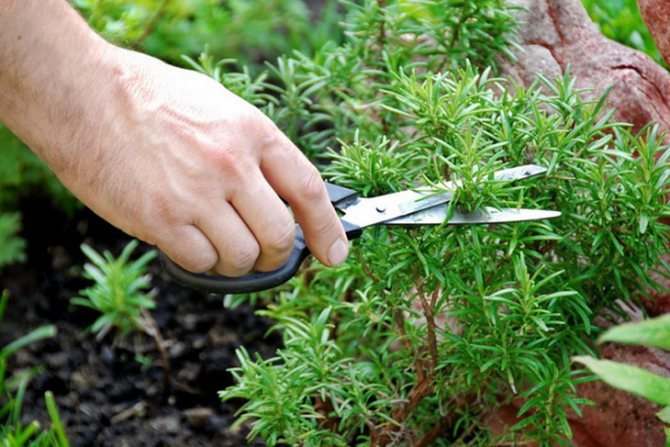
Pruning young shoots with garden shears
Growing rosemary at home in a pot
Rosemary is a wild plant that was domesticated not so long ago, in this regard, during its cultivation, growers face some difficulties regarding reproduction and care. The plant propagates using cuttings, dividing the bush, and seeds. But most often at home they use the cuttings method.


You may be interested in:
Crossandra - care and cultivation at home Crossandra is an "Indian" beauty, which has fallen in love with many flower growers due to its bright and long-lasting ... Read more ...
From seed
Rosemary seeds can be purchased at any specialty store. However, it should be remembered that seeds sprout reluctantly, therefore, with this method of reproduction, all recommendations of agricultural technology should be followed as much as possible.
It is recommended to start sowing seeds in early spring or autumn. You can sow extremely well-moistened planting material.To moisturize, it is enough to spread the seeds over the surface of abundantly moistened gauze and leave them for 48 hours.
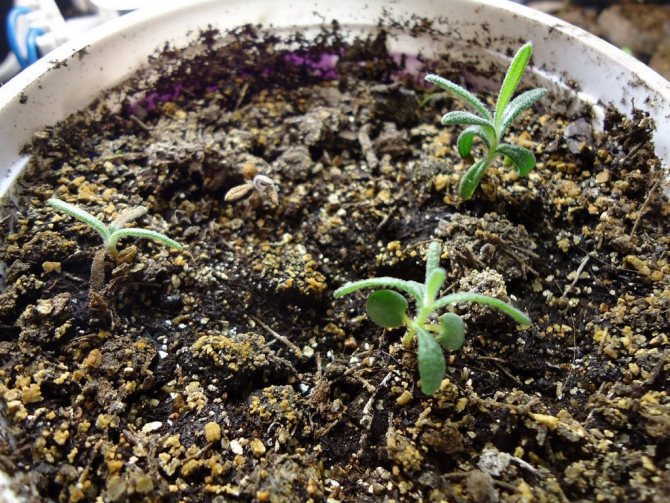

Seed rosemary
After soaking, the seeds are spread over damp soil and covered with plastic wrap with multiple punctures for good breathability. You can also use a plastic food container with a lid to plant seeds. However, it should be borne in mind that in such a container, they must be ventilated daily. Seed soil requires regular moisture.
The first shoots, which will appear after 2-4 weeks, must be moistened exclusively with a spray bottle. After the height of the seedlings reaches 7-9 cm and more than 3 leaves appear on it, you can start the diving process.
From cuttings
It is quite easy to grow a healthy shrub from cuttings, it is not only a convenient, but also a productive way of propagating a spicy plant. However, it should be borne in mind that for this method it is necessary to have at least one adult shrub, since the cutting for propagation can only be cut from a mature specimen.
Rooting material is best cut in the spring, before the flowering of the shrub, or in the fall. The upper part of the shoot, which has managed to become covered with bark, is used as a cutting. The length of the cutting should be from 8 to 10 cm. Before rooting, the lower leaves of the cutting should be removed, and the places of their cut should be treated with brilliant green.
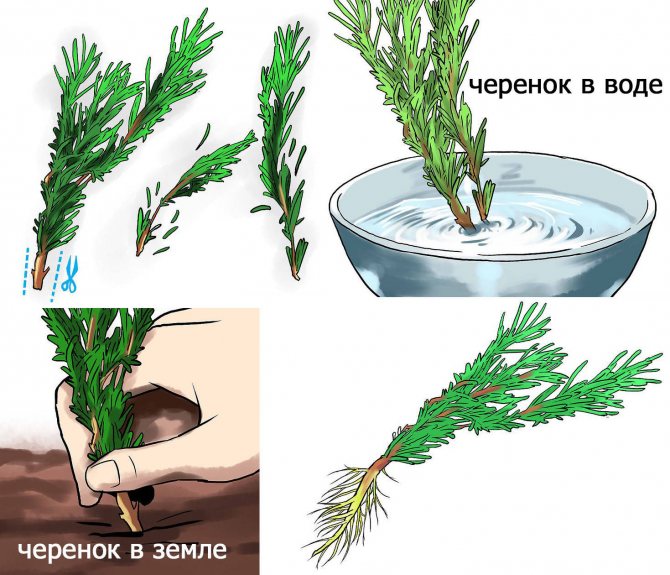

Rooting green cuttings
The stalk takes root equally well both in a glass of water and in a wet soil mixture of peat and sand, taken in equal proportions. It is recommended to plant the stalk in the ground to a depth of 3-4 cm.
If the container with cuttings is kept in a warm place and with sufficient moisture, the first roots may appear after 2-3 weeks. To encourage the development of lateral shoots, you can pinch off the top of the cuttings as soon as they actively move into growth. After 4-6 weeks, the rooted cuttings can be planted in permanent containers.
By dividing the bush
Dividing a bush is the fastest way to propagate a crop that can be resorted to with every plant transplant. The optimal time for this breeding method is the beginning of spring. In order to minimize the chances of damage to the root system of the shrub, it should be spilled with warm water immediately before removing from the pot. The bush from the container should be taken out with a lump of earth.
The shrub is divided into parts with a pruner so that the earthen ball is practically not disturbed. The resulting small shoots must be planted in separate containers.
What you need to know about rosemary
The shrub is divided into two main types - prostrate rosemary and ordinary (medicinal). Indoor cultivation only lends itself to the type of ordinary rosemary (it is also called fragrant). The prostrate is a wild species and is more often used as an ornamental shrub to decorate gardens.
The medicinal species, in turn, is divided into several varieties, which have some, not so significant differences among themselves, but they all take root well at home.
The potted plant can be used as a spice by adding it to dishes. It also has healing properties, decoctions and tinctures from various diseases are made from it. The shrub cleans the air of microbes, emits a fragrant aroma, and according to ancient beliefs, protects the house from evil forces.
Basic rules for caring for rosemary at home
Rosemary is a fairly unpretentious plant that is easy to grow at home, however, caring for it still requires adherence to the basic recommendations of agricultural technology.
Important!
The main thing when growing rosemary is to remember that it absolutely does not tolerate frost and even minimal frosts are destructive for it.
Lighting
Rosemary is a light-loving plant that does not harm even prolonged exposure to direct sunlight. In spring and summer, the plant can be taken out onto a balcony or loggia, this will not only provide it with enough light, but also saturate the flower with oxygen.
Temperature regime
In the warm season, the flower does not need to be maintained at a certain temperature; the ambient temperature is quite suitable for it.
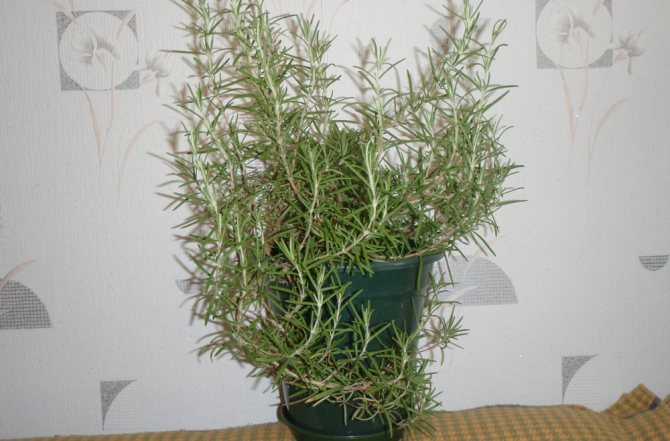

Rosemary care
But with the onset of cold weather, it is recommended to keep rosemary in a cold room, since cold wintering stimulates its flowering. The temperature at which it is recommended to keep a flower in winter can fluctuate between + 8-13 ° C.
Humidity and watering
Despite the fact that rosemary is a drought-resistant plant, it must be watered regularly, otherwise its leaves will turn yellow. From early spring to the first cold weather, the flower needs frequent watering. Plants that are in "hibernation" often do not need to be watered, 1 watering every 2 weeks will be enough, however, it is not worth allowing the soil to dry out deeply.
Advice!
For irrigation, it is recommended to take well-settled "soft" water at room temperature.
Rosemary has no specific requirements for humidity. But periodic spraying during severe drought will benefit ornamental crops.
Top dressing
During the period of active growth, which lasts from March to September, the spice needs additional feeding once every 2 weeks. In the rest of the year, there is no need to apply fertilizer more often than once every 30 days. As a top dressing, you can use complex fertilizers for ornamental crops. Additionally, you can use a calcium solution to fertilize the flower.
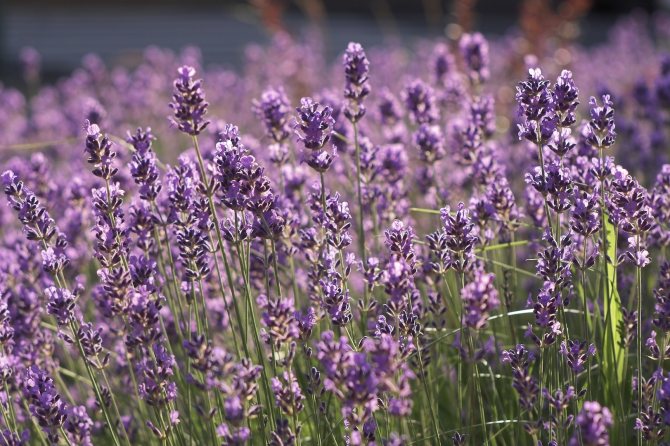

You may be interested in:
Lavender: grown from seed Lavender is a beautiful and elegant plant. It belongs to the family of perennial plants and germinates in the form of ... Read more ...
Transfer
The root system of rosemary is actively growing, quickly occupying the entire space of the pot, so the plant needs to be transplanted at least once every 2 years. If necessary, the bush can be replanted annually.
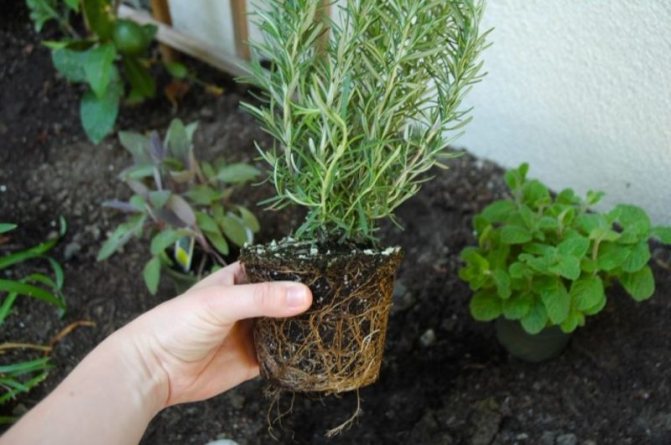

Rosemary transplant
Typically, the plant is transplanted in the spring before it blooms. The main rule when transplanting is to provide the soil with a good drainage layer.
Pruning features
Pruning stimulates the formation of new branches and allows you to increase the decorative effect of the culture. It is necessary to carry out the pruning procedure immediately after the flowering of the bush. When pruning, it is not recommended to remove more than one third of the shoot from the tip of the leaves.
Remember!
During pruning, do not touch the woody base of the bush.
Planting rosemary on a windowsill
Now let's take a closer look at how to plant rosemary on a windowsill.
How to choose the right rosemary pot
A wide terracotta pot is ideal for the plant, but an earthen vessel can also be used. It is only important to take into account that its root system is very branched and requires a lot of space. At the bottom, it is imperative to pour expanded clay or small pebbles to ensure good ventilation and avoid moisture stagnation.
Important! There are a huge number of varieties of rosemary that grow everywhere, but you can grow the only variety on the windowsill - fragrant rosemary.
What should be the soil for planting
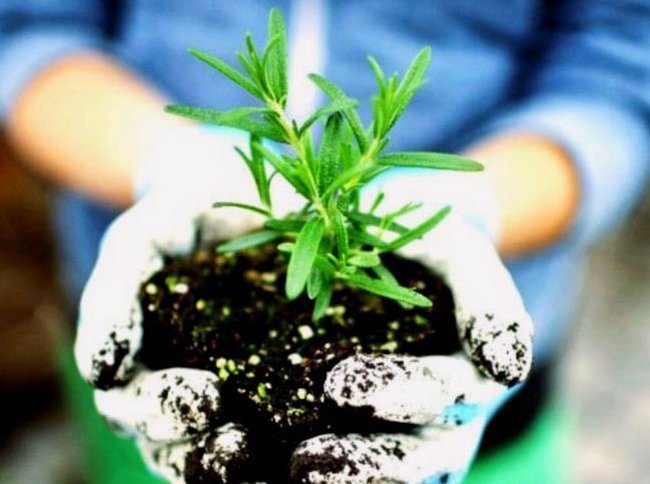

The next question in solving the problem of how to plant rosemary correctly is choosing the right soil. It should be a neutral or slightly alkaline permeable soil that allows air to pass through well - crushed stone, sandy, calcareous soils, into which it is desirable to add sand or peat.
This will facilitate the loosening that plant farming requires. In any case, before planting or sowing, they must be treated and disinfected.
Although rosemary is undemanding to the soil, it needs to be fed regularly. Supplements are made regularly every two weeks. In winter, it is enough to carry out this procedure once a month.
Possible problems when growing rosemary in an apartment
When growing rosemary in an apartment for the first time, even an experienced florist may face some difficulties. A plant as hardy and hardy as rosemary, it is susceptible to various diseases and pests caused by inadequate care:
- Prolonged exposure to direct sunlight on the ground part of the plant can lead to the fact that its leaves will fade and subsequently wither. Moving the container with shrubs to a place with diffused lighting will help solve this problem.
- The yellowed lower leaves indicate that watering is disturbed and the bush does not have enough moisture. But the weakened aroma and fallen leaves, on the contrary, indicate an excess of water in the soil.
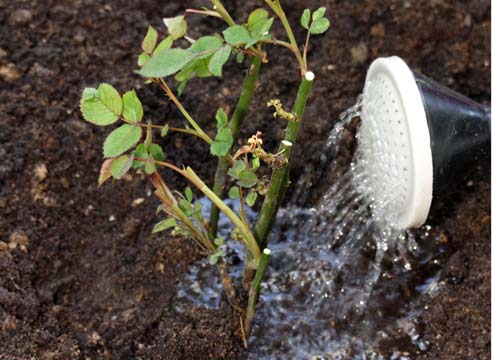

Establishing an irrigation system will return the flower to its decorative effect. - Keeping a shrub in a poorly ventilated room with high humidity can lead to the appearance of a fungal disease, downy mildew. The disease manifests itself as a white bloom on the aboveground surface of the plant, and may acquire a brown color. Treatment of this lesion consists in removing the affected areas and transplanting the bush into a new disinfected soil. It is also recommended to treat the plant with antifungal agents.
- In the winter season, when the indoor air is too dry, the plant can be infested with spider mites. The presence of a tick can be seen by a thin web that envelops the leaves and stem of the shrub. In case of mild damage, the pest can be dealt with by treating with soapy water. However, if the infection was not noticed immediately, it will not be possible to do without insecticides.
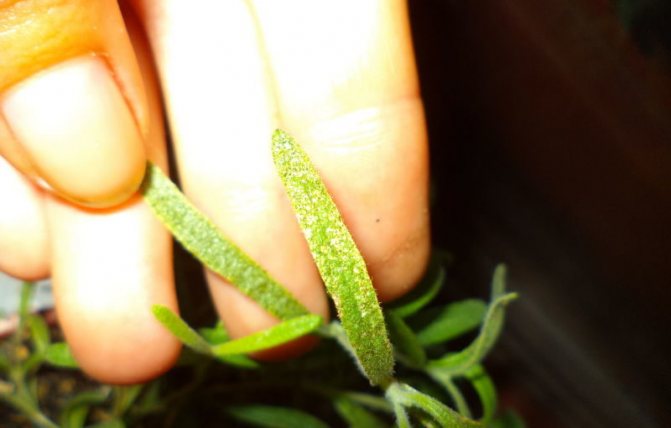

Rosemary disease - Besides the tick, the shrub can also be susceptible to aphid infestation. The leaves of such a plant are deformed and curled up. To cope with insects is possible only with the help of insecticides.
Possible diseases
This plant is quite resistant to diseases and pests. It's not for nothing that rosemary grows so well outdoors. True, this applies only to the southern climatic zones, where there is a lot of heat, sunlight, and the air is dry enough. In an apartment, and even in the middle lane, it is a little more difficult.
For example, you may notice a thin, barely visible cobweb on a rosemary bush. This spider mite left traces of its activity. Before it's too late, wash each leaf with soapy water (dissolve 50 g of household soap crushed on a grater in 1 liter of warm water). If time is lost and the infestation is severe enough, spray the plant with insecticide.
In addition, rosemary can catch powdery mildew, attack by whiteflies or aphids. Most often, these problems occur in winter. To prevent such diseases and lesions, do not allow too high humidity in the room that contains rosemary. Use dehumidifiers.
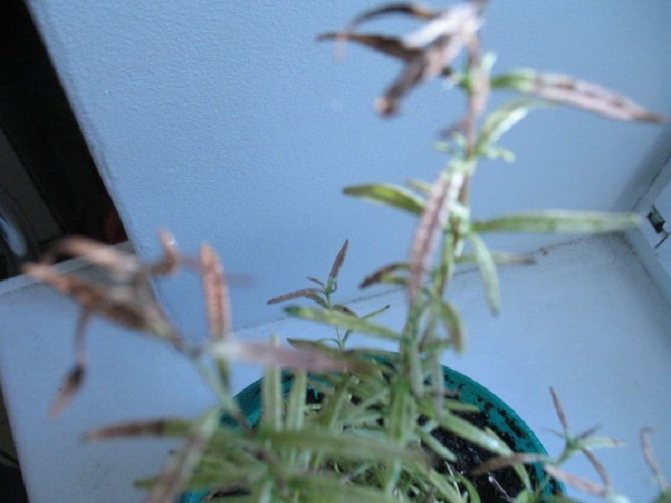

Pay attention to any changes in the appearance of rosemary to prevent disease
To prevent aphids and whiteflies from settling on the flower, regularly shower it with soapy water. One or two times a month will be enough. Spraying with insecticidal soap solutions will not hurt either.
Powdery mildew (it looks like a white bloom) is difficult to notice on rosemary leaves, covered with thick thin light hairs. That is why such a disease most often becomes the cause of death. If the rosemary leaves began to darken and dry, and you are sure that the plant is provided with the correct temperature conditions, watering and lighting, then the diagnosis is unambiguous - powdery mildew damage.At this stage, only insecticide treatment will help you.
Signs and benefits of a plant for the home
Growing rosemary at home in a pot, you can simultaneously get a beautiful plant, a delicious spice and a natural air freshener.The history of growing shrubs dates back to ancient times, because then rosemary was considered a symbol of Aphrodite, the goddess of love and beauty. People believed that the plant is capable of maintaining youth, as well as putting in order thoughts and feelings.
Currently, it is believed that rosemary blooms only in the "real" housewife, who holds in her hands not only her house, but also her husband. Therefore, a healthy, branched and flowering shrub is a compliment to a woman from nature itself.
The bush leaves contain an essential oil rich in phytoncides and antioxidants that freshen the air and cleanses it of harmful impurities and particles. The scent of the bush helps to relax and relieve stress, balancing the emotional state of the person.
Good to know!
The presence of shrubs in the nursery helps to calm the child and normalize his sleep.
Rosemary is rich in nutrients and vitamins, due to which its oil is actively used in folk medicine for the treatment of various pathologies, such as migraine, diabetes mellitus, neurasthenia, inflammation of the kidneys, liver and gastrointestinal tract.
Due to the fact that the plant has a specific coniferous smell, it is a popular spice that will add an exquisite taste to any meat, fish and vegetable dishes. Drinks with the addition of rosemary sprigs can energize and invigorate a person.
The plant will purify the air, bring peace to the house, and will also be a great addition to any dish, be it a side dish or dessert.
Brief description of rosemary with photo
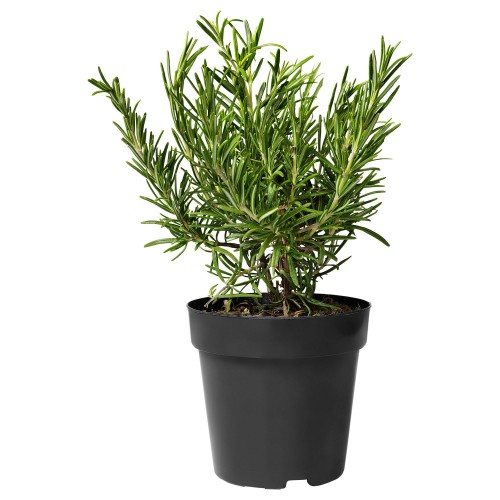

Rosemary is an evergreen shrub belonging to the Lipo family. Under natural conditions, it grows very quickly, every year by about 20 cm. The maximum height of an adult perennial is 2 m. Domestic specimens are much lower than their "wild companions". Wild shrubs can grow in one place for 10-15 years, in a room (with proper care) - 20-30 years.
Brief botanical characteristics of rosemary:
- the root system is powerful, woody and branched, the stem is erect, gray-brown;
- branches are branched, tetrahedral, pubescent;
- leaves are leathery, linear, opposite, up to 3.5 cm long, up to 0.4 cm wide;
- flowers are small, bluish-purple in color, collected in inflorescences;
- the fruit is round, outwardly reminiscent of a small brown nut.
Fresh, slightly bitter leaves have a pronounced aroma, reminiscent of a complex mixture of eucalyptus, camphor, lemon, pine. Flowering occurs in April-May, and the seeds ripen only in September.
Attention!
Rosemary, placed in the room, effectively cleans the air from pathogenic microorganisms. This is due to the antibacterial effect of the essential oils that make up the herb.
Rosemary contains not only essential oils, but also a whole range of useful substances. For medicinal purposes, the leaves of the plant are used. Fresh or dried leaves are added to many dishes. The aromatic spice is very decorative. It is often used in landscape gardening design, both in group and in single plantings. Rosemary hedges look spectacular.
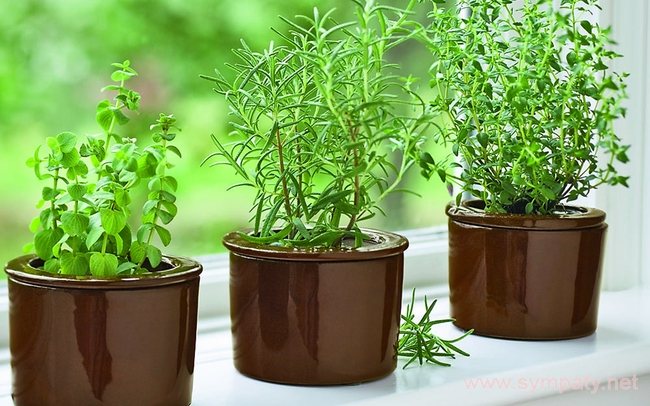

Propagation of this beneficial culture
Seeds
They are sold in many flower shops, especially in the spring when summer residents and gardeners buy them.
Sowing them is also better in spring, from mid-March.
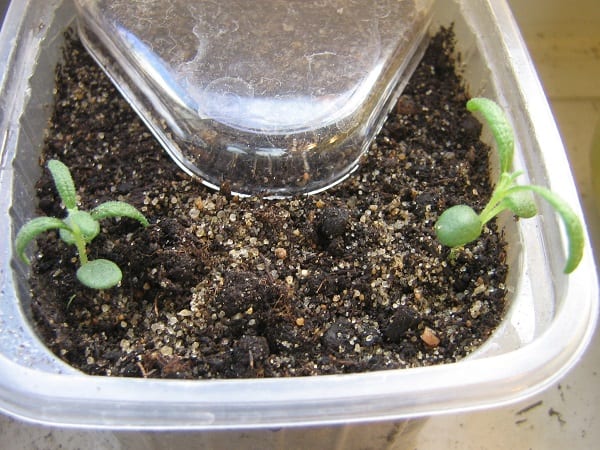

Substrate should not be sour, loose. Let's say you can mix sand and peat. But it is important which peat you choose! Horse - the most acidic (with a pH of 2.6 to 3.2), it will not work for you. Transient too (its pH is from 3.2 to 4.6). You need to search low or deep peat (pH 5.5 to 7).
- Soak the seeds in clean water for 2 days.So that they do not float, it is better to wrap them with gauze or a piece of bandage.
- Fill a transparent plastic container with a lid with earth (these cakes are sold by weight). Other containers can be used, but this container is the most convenient.
- Embed the seeds to a shallow depth.
- Grow them under the lid, gently sprinkling the soil and opening the lid every day to let in clean air.
- Seedlings should appear in 20-30 days.
- Seedlings, which are one month old, grow several true leaves. Such seedlings dive into separate pots.
By the way! Rosemary can be germinated not only in spring, but also in early autumn.
Cuttings
In order for the stalk to take root, it must be about 8-10 cm long. Choose lignified branches from the top of the crown of the bush.
First, clean the lower part of the cutting from the leaves.
It can be rooted in water.
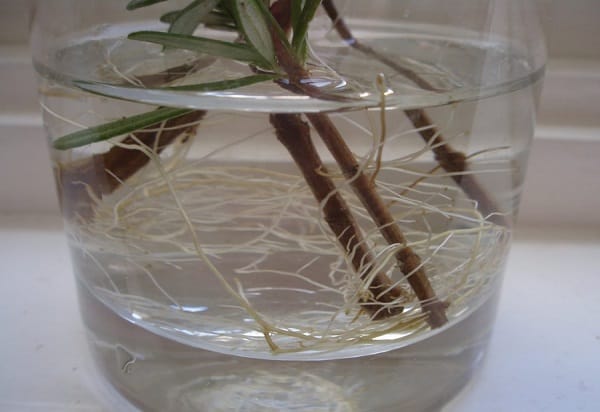

Also, the cuttings (at a slight slope) are stuck into loose substrate - the same peat with sand or clean sand, and rooted under a greenhouse - say, putting this whole structure in a large transparent bag. From time to time, the soil needs to be watered, not allowing it to dry out completely.
Rosemary can even be grown from a sprig purchased at the supermarket. Here's how such a stalk was rooted (the video shows two examples - the first failed, the second successful):
And in addition, other vegetative propagation methods are suitable for this plant: layering and dividing the bush.
Rosemary breeding methods
There are several ways to propagate rosemary to start growing it indoors:
- sow and grow from seeds;
- cut the cuttings and then root;
- buy ready-made bushes or young seedlings.
Naturally, the easiest way is to buy its seedlings and continue growing on the windowsill. But it is much more interesting to follow the growth of a spicy plant from scratch, especially in an apartment, where you can observe its full formation. Plus, growing rosemary isn't all that difficult.
However, it is worth knowing that rosemary is a perennial, and like all perennials, it grows very slowly in the initial period.
Video: growing straight greens on a windowsill - how to propagate rosemary by seeds and cuttings
How to Grow Luxurious Rosemary from Seeds
Seeds-nuts remain viable for 3 years. It is required to store the seed in paper bags. The seeds do not need pre-sowing treatment, they can be sown in autumn or spring.
Before sowing, it is recommended to soak the seeds for 2-3 days in a damp cloth. As it dries, the material must be moistened. During this time, the seeds will swell a little, and it will become clear which ones are suitable for sowing, and which ones can be thrown away. Seeds are sown in prepared pots with fertile moist soil, scattered over the surface. After sowing, watering is not required, you just need to cover the containers with polyethylene and put them in a warm, bright place.
Attention! Rosemary seeds sprout within a month! If during this time the sprouts have not appeared, it is recommended to renew the crops, but plant them in new containers. To properly grow rosemary from seeds, you must follow the rules.
- During the month, it is necessary to regularly ventilate the greenhouse so that the earth does not oxidize and the seeds do not rot.
- Water only as the topsoil dries up. Watering should be fine, from a spray bottle.
- When 3 true leaves appear on the plant, you need to thin out the plantings or cut the seedlings into separate cups.
- During transplantation, the root system must not be damaged, otherwise the "rosemary" will develop poorly.
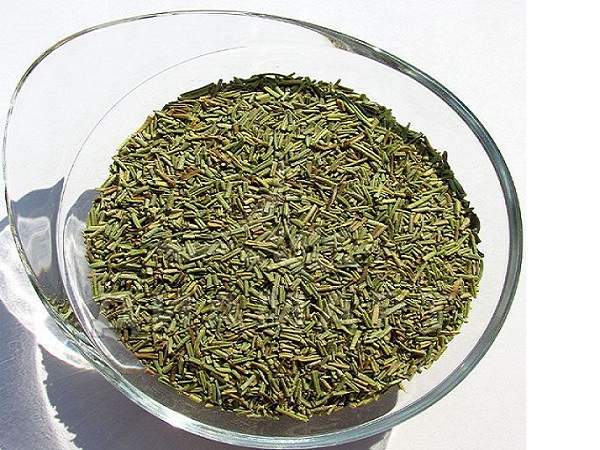

As the plants grow, they are transferred to a larger pot to provide the root system with enough room to develop.
For your information! In winter, rosemary grows well in the winter garden. Growth requires a temperature of +12 ºC to +20 ºC.When kept in a hot room, the plant will lose its decorative effect and begin to shed its foliage.
Lower temperatures have a negative effect on the plant: the root system is supercooled, which leads to the death of the plant.
Planting a plant
Its further development depends on how correctly the flower is planted. Mistakes during the planting phase lead to the fact that the rosemary begins to wither and may die.
Requirements for soil and pot
The result of growing a plant depends on the correct choice of pot and soil. Rosemary root is very branched and needs a spacious container. The roots have a high oxygen demand, and therefore the pot material must be porous. Clay is the best choice. Coated pots should not be used. A pot with an average diameter of about 20 cm is suitable for a young plant.
The plant needs special soil. You can buy a lime-based gravelly substrate at a flower shop, but it is better to prepare a soil for rosemary yourself.
For this, the following components are connected:
- leafy soil - 2 parts;
- sod soil, from which all roots have been removed - 2 parts;
- humus - 1 part;
- coarse river sand - 1 part;
- peat - 1 part.
Before the plant is planted, the soil must be very well shed with water.


